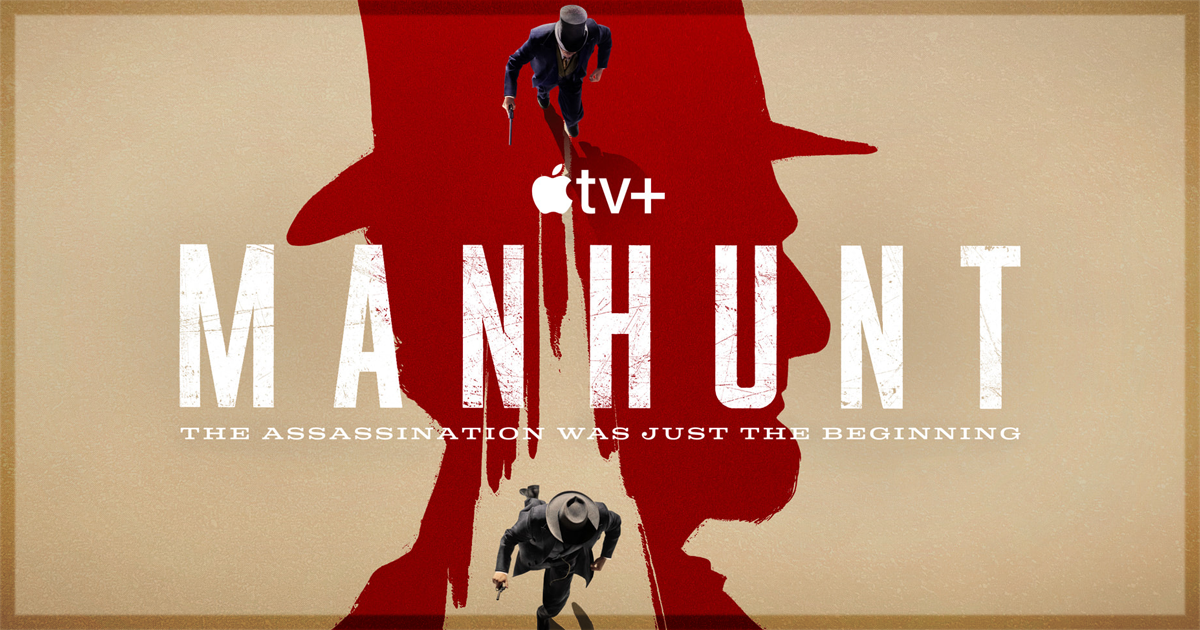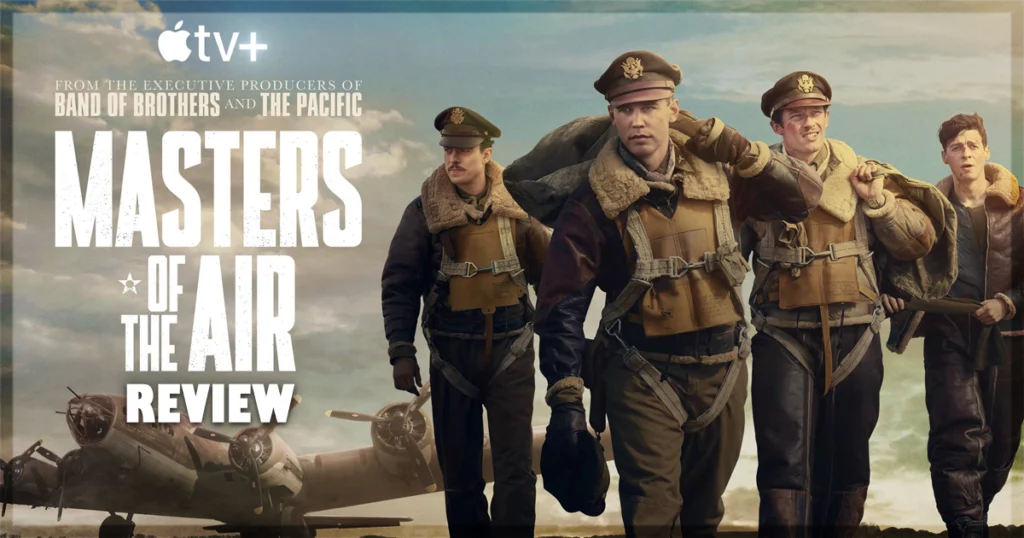It is likely that 99% of the audience for Manhunt will push play on the first episode knowing roughly how the events play out. Monica Beletsky’s seven-part adaptation uses James L. Swanson’s book of the same name as a rough starting point to chronicle the 12-day search for John Wilkes Booth and his co-conspirators after the assassination of President Abraham Lincoln and attempted assassinations of other high-ranking government officials. This writer learned about Ford’s Theatre through a US middle school education, and Booth’s end at a fiery barn through Sondheim’s mean-spirited masterpiece Assassins. Anthony Boyle (Booth) cites The Simpsons. Like many historical dramas, it may self-select an audience that is already interested in the real events behind it.
Is Manhunt Worth Watching? In short, yes.
If the story is known, however, the explosive six minutes before the first episode’s title card – a cryptic message, an extraordinarily shot murder attempt seen silhouetted through doors and windows – establishes a world in crisis with visceral immediacy. Manhunt quickly proves it is not what happens, but how, that makes for gripping television.
Secretary of War Edwin Stanton (Tobias Menzies) becomes the viewpoint character; formerly President Lincoln’s (Hamish Linklater) right-hand man in the Civil War and planned Reconstruction, he turns his calculated focus and workaholism – alongside a simmering undercurrent of rage, grief, and guilt – to track Booth’s flight from Washington and bring him to justice alongside accomplices David Herold (Will Harrison), Lewis Powell (Spencer Treat Clark), George Atzerodt (Tommie Turvey), and mother and son Mary and John Surratt (Carrie Lazar and Josh Mikel). At the same time, Robert E. Lee’s surrender is barely five days old, the reunification of the States is on perilous ground, and Stanton and the newly sworn-in Andrew Johnson (Glenn Morshower) are not kindly disposed towards the other.
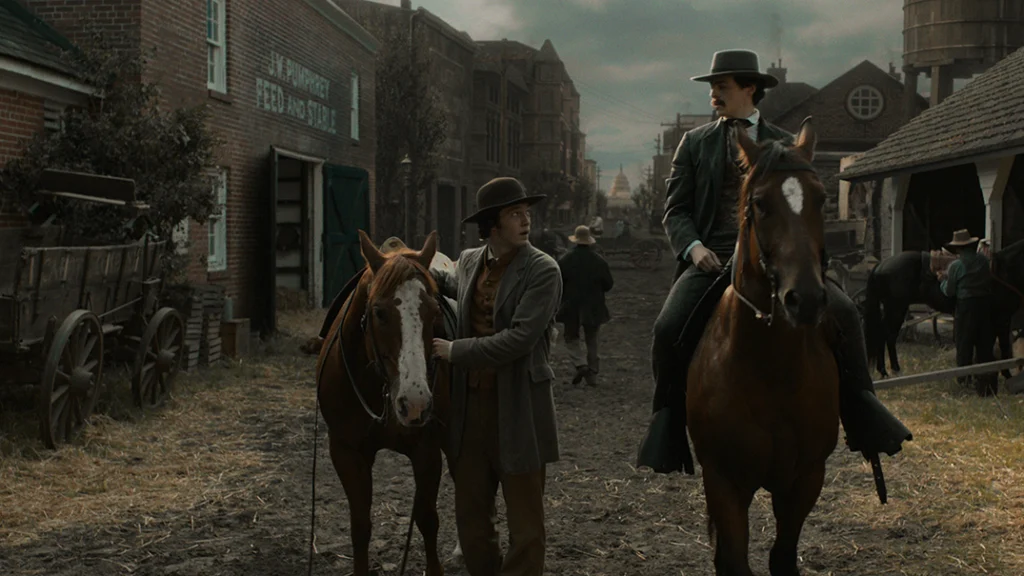
History Meets Thriller in This Lincoln Assassination Drama
Manhunt is not a documentary, and Beletsky and her creative team work with well-known facts and creative license to produce an engrossing tale by turns enraging and poignant. When there is debate about what was said, or how a leg was broken, they decisively choose one route rather than hedge bets. Stanton never went out on Booth’s trail in reality, but sending him on the road keeps him and the audience present at major developments (even if the speed at which he moves from Montreal to Washington to the Garrett farm slightly stretches credulity).
Almost all of Booth’s interactions on the run are fabricated, as no record of his activities exists; much of this dialogue comes from Beletsky and Boyle’s reading of Booth’s letters. A few late-season interpretive choices nod towards gaps in current historical knowledge that may never be filled; thankfully these do not lean into (pre-existing, nonfactual) conspiracy theories but instead explore the freedom of such ambiguity and nuance to weave an engaging, satisfying tale balancing narrative confidence with room for audience interpretation.
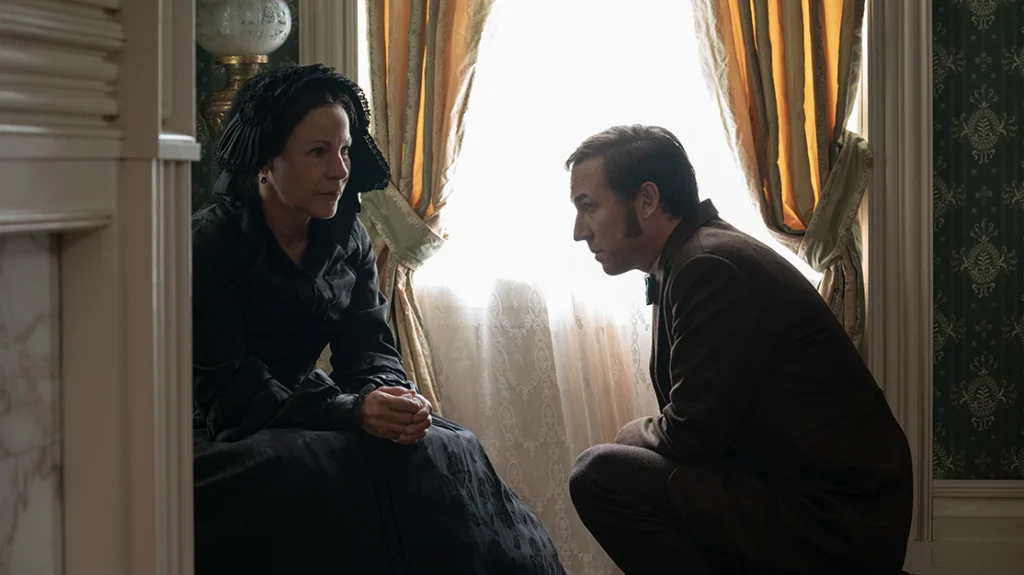
Balancing Drama and Historical Detail
One of the greatest half-inventions of Manhunt is the greatly expanded role of Mary Simms (Lovie Simone), the former slave of Dr. Samuel Mudd (Matt Walsh). In real life, she left Mudd for other employment well before Booth showed up with his broken leg and did not testify to Mudd’s Confederate connections until well after the events of the series; however, she and her brother Milo (Antonio J Bell) become stand-ins for the ten Black witnesses who testified against the Mudd and the other conspirators as well as the young girls who were working for Mudd at the time of Lincoln’s assassination. (Source.)
Since these figures have largely been forgotten by history – Beletsky points out that more has been recorded about Booth’s horse than the historical Mary Simms – giving Mary pivotal insight and agency into the proceedings nods towards the thousands of testimonies lost to time, prejudice, and oppression across the United States’ bloody history.

Directing and Cinematography in Manhunt
Carl Franklin, director of Devil in a Blue Dress, is behind the camera for the first two episodes, with John Dahl (also known for his work in noir/neo-noir) and Eva Sørhaug taking over to finish the show. Franklin establishes a sense of space and weight without losing urgency and pace; the frenetic scenes maintain a breathing space for the turmoil to fully register, never feeling confused. While perhaps more procedural than thriller, the mix of action, reflection, gravity, and levity carries through the other directors’ work. The highs of his composition and pacing may not quite be matched, but by that point, the hook is in, and the masterful performances are undimmed. With cinematographers Robert Humphreys and Trevor Forrest and editors Damien Smith, Karoliina Tuovinen, and David Berman working across the three directors’ episodes, the series does not feel disjointed in pacing or artistry.
Manhunt’s Rich Characters and Themes
Stanton is Menzies’ first time with first billing, and he might turn in a career-best performance in the opportunity. Stanton was a fearsome political operator, hampered only by his asthma in an age before modern medicine, but Menzies finds the humanity behind his ruthless drive for justice – be it against the entire South, or merely (merely!) the man who killed his friend. Stanton’s prior loss of his first wife and a young son are etched into Menzies’ almost surreal calm in moments of crisis; it is not that Stanton is emotionally repressed, he just has no time for anything except forward motion, even when this relentless action damages his health.

Boyle nails the combination of self-aggrandizement and self-pity characterizing the least talented actor of the Booth family seduced by a white supremacist narrative of oppression; at one point his (more successful) brother Edwin says he only knows how to play the victim, and this prickly pride is evident every time a passerby comments that John Wilkes is smaller off the stage. It is a compelling, chilling portrait; the young Irish actor is having an extraordinary breakout year.
The rest of the cast is uniformly excellent, even if Patton Oswalt never quite convinces as an 1860s man despite a sterling job by the hair and makeup department. Simone’s Mary is the most sympathetic character, making the threat of those first days, weeks, and months following the end of the Civil War palpable; the show never lets the audience take the end of slavery and (eventual, uneven, still unfinished) path to equal rights for Black Americans for granted.
The Lincolns are similarly humanized, Linklater working in a historically-informed inflection and dialect (source) and seemingly permanent physical exhaustion; flashbacks between Lincoln and Stanton showing their almost-inseparable working habits and warm camaraderie, as well as the toll the war takes on both men are key to understanding the subsequent lengths to which Stanton will go to bring down the idea of the Confederacy. Lily Taylor plays a Mary Lincoln not as emotionally or mentally unstable but as a woman carrying herself under immense pressure and compounding losses.
The unique narrative of Manhunt
One may associate a crime story – especially the murder of a progressive president by a racist – as a tale of good versus evil. In a sense, this holds: Lincoln’s less-than-stellar track record on Native American rights gets a passing mention, and he is portrayed as a moderate who consults with more radical progressives to develop his policy, but an essential goodness and desire to serve the nation, not himself, is dominant.
Likewise, Beletsky is careful not to turn Booth into any sort of (anti)hero. But throughout Manhunt, the path to justice is paved with self-interest. The old Wall Street guard speculates on Confederate gold, double and triple agents abound, the press wants a story, and Booth reads news bulletins of the assassination as if they are his good theatrical reviews. In the case of Oswell Swann (Roger Payano), a mixed-race free man who helps Booth and Herold to safe houses for an ever-increasing fee, looking out for himself is clearly a well-honed survival tactic. Whether this selfishness manifests as amorality (the old) or fanaticism (the young), with everyone bent on looking out for themselves, Stanton’s position as the altruist (albeit one not above using and manipulating public relations) is fundamentally untenable. And thus, the central tragedy is driven.
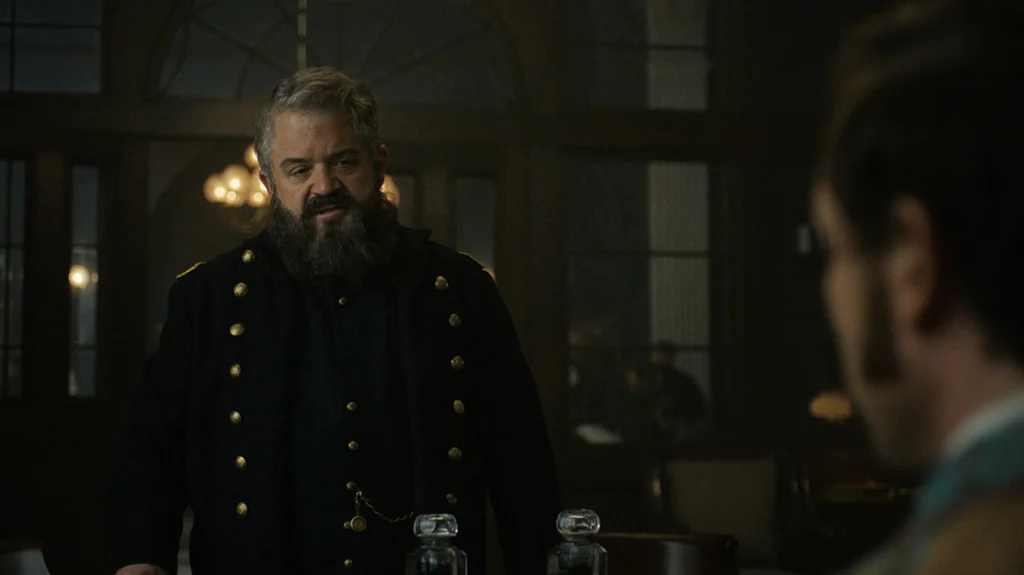
The costume and production design department masterfully develops character through place and attire, researching the era’s bright colors and advancements in textile manufacturing to make outfits and carpets pop while maintaining historical accuracy. Similar attention is paid to hair, facial hair, and makeup; Menzies may not have Stanton’s historical scraggly beard (a fair liberty, considering his performance strength lies in his face) but Booth’s time on the run can be comprehensively traced through his access to a razor. It is a shame the digital city backdrops, notably in the depiction of Richmond in ruins at the end of the third episode, look noticeably flat compared to the richness elsewhere.
Beletsky has a script credit on every episode, and the dialogue and tone can lean contemporary: Spymaster Lafayette Baker (Oswalt) calling Booth a ‘creep’ is, despite social media protestations, truly historically accurate, though Johnson’s unironic musings about pulling himself up ‘by his bootstraps’ may be just too early for that usage, as is some jargon around fast-paced social and political developments in the finale. Flashes back and forward in time are well signposted and cleverly inserted to bring in puzzle pieces organically, connecting dots not only in the conspiracy Stanton hopes to pin on the Confederacy but within the characters’ lives and motivations.
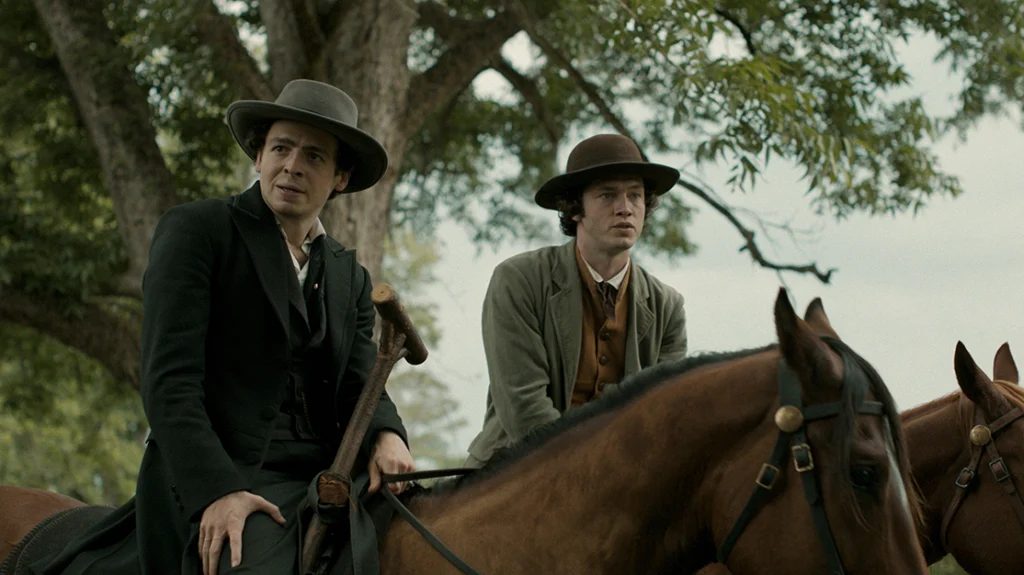
Why Watch Manhunt
The way in which the past and present collide and comment on each other in Manhunt – 1865 and 2024 in parallel – may not work for everyone: such moments are not always subtle. The warmth with which the cast imbue these monumental relationships plays no small part in softening any threatened didacticism.
What ultimately emerges in these parallels is a poignant picture of the cyclical nature of American power, idealism, avarice, vainglory, and violence: the United States was founded on imperfect ideals that inherently excluded people, the quest to right these wrongs has seen good people changed and corrupted, and the quest to maintain the status quo has favored the same type of oppressors throughout the nation’s history – the ones who trade on misery. The end result may not be revelatory, but the effect is often profoundly moving. There is hope for the country in 1865 and in 2024, but progress is never a guarantee.
Manhunt does not put a new spin on history, nor is it ‘accurate’ enough to please the most persnickety Civil War buffs, but it gives a fantastic creative team a platform to deliver one excellent true crime drama. Now that all seven episodes are streaming on AppleTV+, there is no better time for a weekend binge-watch. It fits the streamer’s reputation for peak Prestige Dad TV, and the strength of its performances and rich design appeals and captivates beyond the well-trod subject.
Manhunt is now streaming on Apple TV+.

